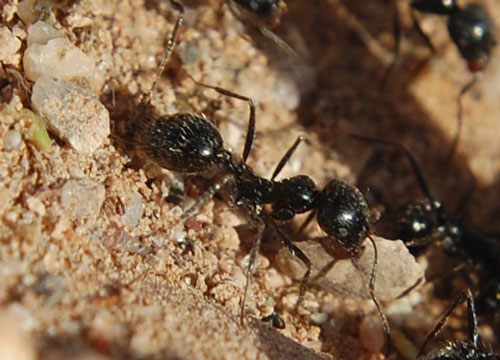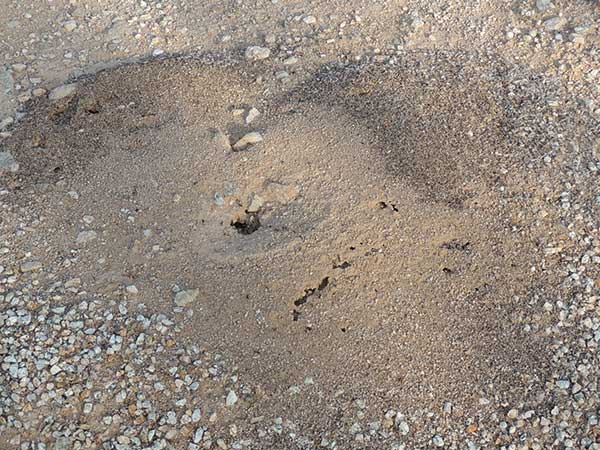Desert Harvester Ant
Veromessor (Messor) pergandei

At Painted Rock Mt., Maricopa County, Arizona on 1 Nov. 2008.
Formicidae -- Ant Family
Sponsored Links
This is the most common harvester ant in the hottest, driest portions of the Sonoran Desert. They are shiny black and range from 4 to 8 mm in length. They have a specialized structure on the venter of the head called a psammaphore that is used to excavate loose, sandy soil particles. Unlike the larger, usually redder harvesters of mid and upland Sonoran Desert (Pogonomyrmex), these ants do not sting.
In the Sonoran Desert harvester ants of several species play a key role in the ecology of the ecosystem. Their roles are several fold. First they gather a tremendous quantity of seeds from virtually all plant species, but they show preferences for some; this seed predation impacts the favored species and changes the composition of the seed banks in the soil. Once gathered into their larder the seeds are consumed but not at the same time. Some seeds have coats that are hard for the ants to crack. Others are more nutritious. When a season of bounty returns uneaten seeds may be discarded and later germinate.
Most colonies are established by a single queen and successful ones may reign for many years with thousands of workers. Year after year the inedible chaff from the cracked seeds is piled just beyond the cleared nest boundary. This organic mulch can easily surpass several centimeters in depth and extend over a meter square. Eventually the colony dies when the queen dies and left in its wake is an organically enriched soil with improved penetration and enhanced fertility. Abandoned harvester ant colonies are a prime germination site for new desert plants.

Estrella Mt Park, Arizona on 1 Nov. 2008.